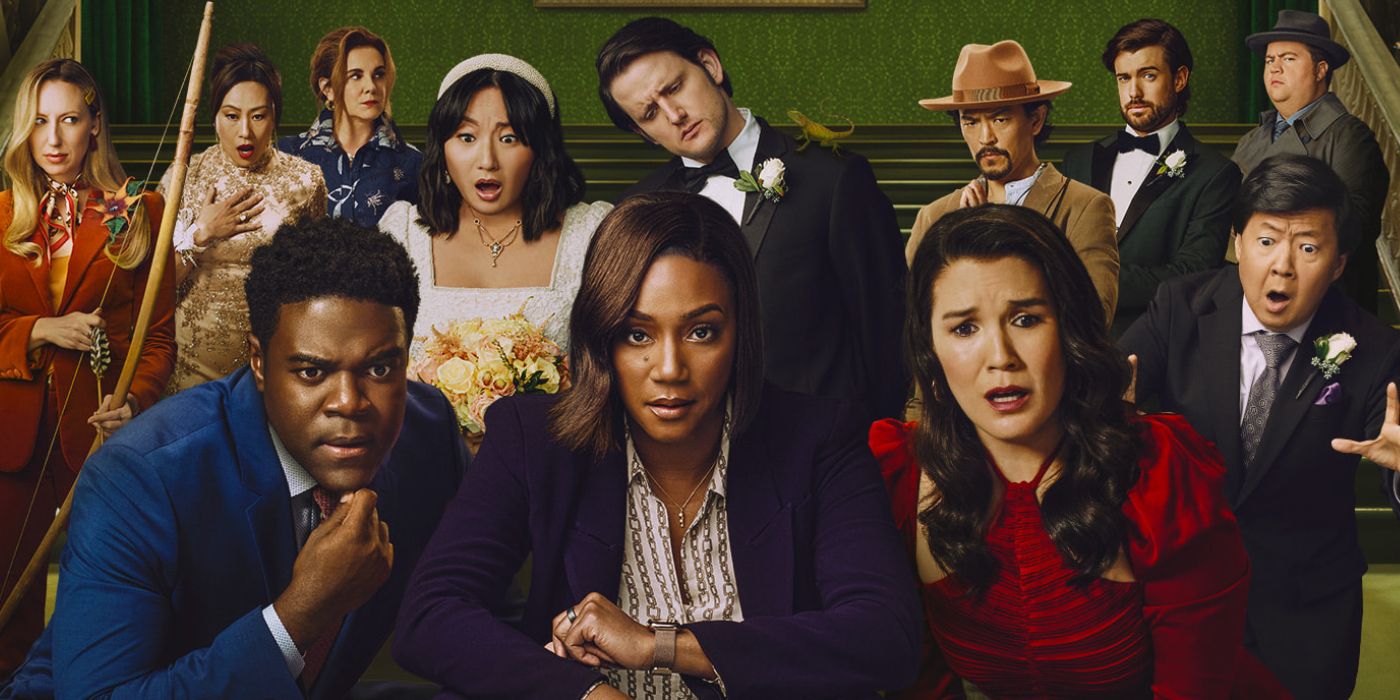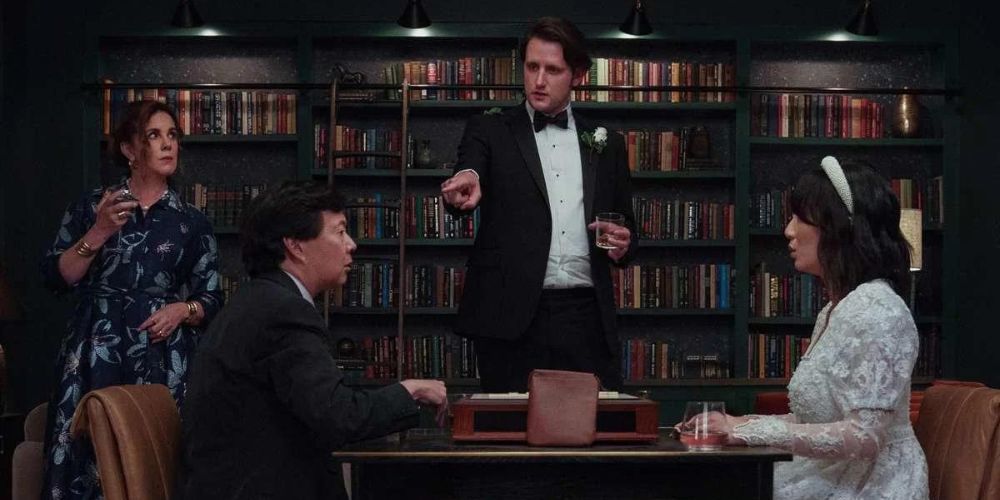Watching The Afterparty is supposed to feel like you’re watching a bunch of short films about the same event, which sounds repetitive but is far from it. The writers and actors on Apple TV’s murder mystery/comedy — now in its second season — have built a show that seems impossibly funny.
Centered around the murder of someone at an afterparty, each season of The Afterparty has featured just three repeated characters — Aniq (Sam Richardson), Zoë (Zoë Chao), and Detective Danner (Tiffany Haddish). The full ensemble of each season shares their version of the night’s events, revealing different angles and clues that help Detective Danner solve the whodunit. Though Season 2 is still underway, Season 1’s killer reveal was as much of a surprise to viewers as it was to the afterparty’s attendees.
When Detective Danner arrives at the scene after the murder of actor and pop star Xavier, she isn’t actually supposed to be there. Told by her Captain that a “ringer” is coming in from Los Angeles, Danner is given permission only to collect statements but tells the police on the scene that she’s lead on the case. Danner and her partner, Detective Culver (John Early), investigate the crime scene briefly before Danner pulls each of the suspects into Xavier’s in-house recording studio, so they can tell her their “mind movie.” Accused of murder by one of the Jennifers, Aniq goes first.
At the reunion and the afterparty to reconnect with his high school lab partner, and crush, Zoë, Aniq’s mind movie is a traditional rom-com, complete with unexpected hijinks, “Rollercoaster” by Bleachers, and an almost-kiss in the rain. Danner then interviews five additional guests: Brett (Ike Barinholtz), Zoë’s ex-husband, whose mind movie contains a car chase a la Fast & Furious; Yasper (Ben Schwartz), who sings his way through the evening; Chelsea (Ilana Glazer), who is caught in a psychological thriller; Walt (Jamie Demetriou), who no one can remember but is able to give Danner relevant high school details; and Zoë, an artist turned Vice-Principal who tells Danner her story through animation and even does the voices, a decision Danner finds oddly unsettling.
Danner reveals Xavier’s murderer in Episode 8, aided by Zoë and Brett’s daughter Maggie, who has been in the car since the party thanks to Brett not leaving when he should have. But it isn’t the final reveal or even how Danner solves the case that makes the show stand out — it’s how the story is told. Crime shows are notorious for being pretty packaged: here’s what the suspect says, here’s what the police know from witnesses, and here’s what the victim says, assuming they’re alive. The Afterparty looks at as many perspectives as possible, told in a way only those individuals can tell it. It’s 1985’s cult-classic Clue on steroids.
Season 2’s Best Episode Was Inspired by Wes Anderson
When The Afterparty returned for Season 2 on July 12, it began with a wedding. Aniq and Zoë, who got together at the end of Season 1, are attending the wedding of Zoë’s sister Grace (Poppy Liu) to Edgar (Zach Woods), an ultra-rich crypto guy who walks around with his pet lizard, Roxanne, on his shoulder. When Grace wakes up the day after her wedding to a dead husband in her bed — and a dead lizard in its cage — and Edgar’s mother accuses Grace of murder, Aniq calls Detective Danner for help. Together, they interview the remaining wedding party, starting with Grace, who tells her story like a Jane Austen romance, and then moving on to Travis (Paul Walter Hauser), Grace’s former boyfriend, who gives them a film noir; Simon (Jack Whitehall), Edgar’s business partner, whose mind movie is a heist film; and Ulysses (John Cho), Grace and Zoë’s uncle, who saw things as an epic, global romance.
The episode that stands out thus far is Episode 4, “Hannah,” where Edgar’s sister Hannah (Anna Konkle) tells her version of events in a Wes Anderson-inspired indie film, making it the most visually unique. Hannah draws some direct parallels with The Royal Tenenbaum‘s Margot, including cooking on a hot plate while in the bath, owning an important typewriter, and an adoption that’s mentioned constantly. Konkle’s performance is finespun, captivating, and on par with someone like Saoirse Ronan in The Grand Budapest Hotel or Margot Tenenbaum herself, Gwyneth Paltrow. The episode also helps viewers understand Edgar and their unique upbringing differently, which could be relevant to the solving of the case, though, with two episodes still remaining, audiences won’t know for a while yet.
Why The Afterparty is Special
Comedies are unique for their ability to tell a variety of stories that might not otherwise seem funny, and The Afterparty stands out because it continues to push the boundaries by choosing a different film genre for each episode. Beyond telling the story in an uncommon way, it challenges the actors in a way that a more patterned show often cannot. Performing in a film noir is exponentially different from a heist film or an indie movie, and The Afterparty manages to hold the attention of audiences by both building a storyline throughout the season and keeping the viewer guessing by telling that story differently each time.
The Afterparty choosing to change the majority of their cast each year allows them to put different types of actors and comedians together, creating an atmosphere that isn’t found in comedies where the cast stays the same. Encouraging their actors to improvise amplifies their performances, creating a sense of authenticity to the interactions characters are having. The writers of the show also sneak in clues throughout the season to nudge viewers in the right direction. The variety of each episode type, each cast, and how the actors perform help ensure the success of this type of show. Even hearing about murder every season, you’ll never be bored with The Afterparty.




